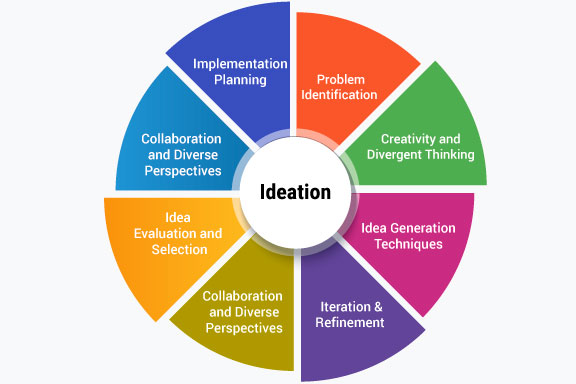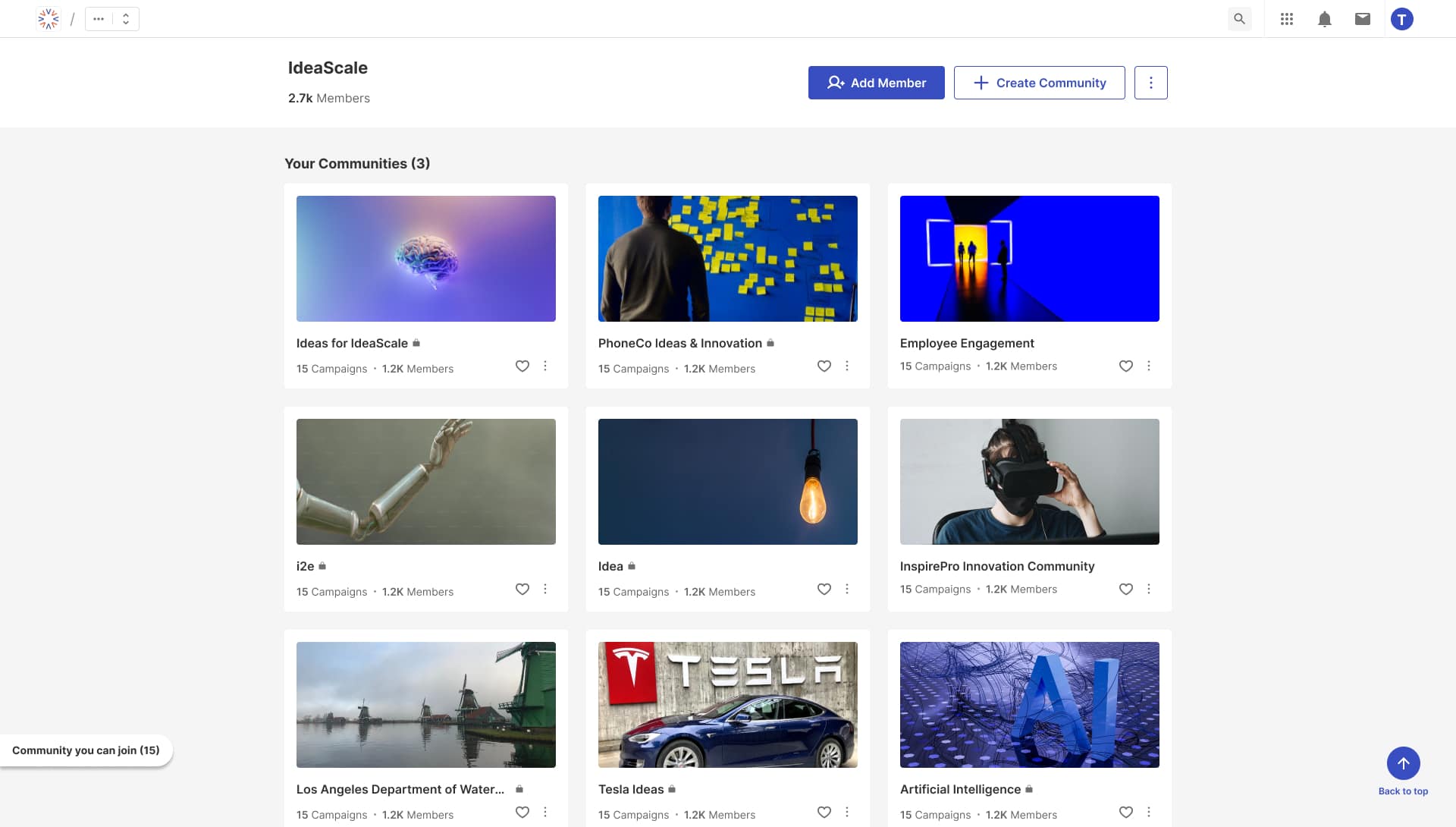Ideation is a crucial component in the innovation process, allowing organizations to generate fresh ideas that can lead to breakthrough solutions. Whether you’re looking to understand the ideation definition or seeking to define ideation within the context of your business, this guide will provide a comprehensive overview. We’ll dive into what ideation is, explore different ideation strategies, and walk through the ideation process to help you harness the power of creativity and innovation.
What is Ideation?
To begin with, let’s define ideation. In simple terms, ideation is the creative process of generating, developing, and communicating new ideas. It encompasses everything from the initial spark of inspiration to the shaping and refining of those ideas into viable solutions.
Ideation Definition: Ideation refers to the process of forming ideas or concepts. It is a structured approach that involves brainstorming, conceptualizing, and evaluating potential solutions to problems or opportunities.
The key components of ideation involve several aspects that contribute to the effective generation and development of ideas. These key components include:
- Problem Identification: Clearly defining the problem or opportunity that needs to be addressed is the foundation of ideation. Identifying the specific challenges, pain points, or unmet needs helps focus the ideation process and directs efforts toward finding relevant solutions.
- Feedback Iteration: Be open to feedback and iterate on your idea based on the insights you gather from potential users, advisors, and mentors. Continuous innovation is essential for refining your business concept.
- Collaboration and Diverse Perspectives: Business ideation often benefits from collaboration among individuals or teams with diverse backgrounds, expertise, and perspectives. Collaborative environments foster the exchange of ideas, cross-pollination of knowledge, and the exploration of different viewpoints, resulting in more comprehensive and innovative ideas.
- Idea Generation Techniques: Various techniques and tools can be employed to stimulate idea generation during the ideation process. These may include brainstorming, mind mapping, SCAMPER (Substitute, Combine, Adapt, Modify, Put to another use, Eliminate, Reverse), or other structured approaches to inspire creativity and generate a large number of ideas. Use tools like IdeaScale Whiteboard to capture and organize ideas. This helps prevent valuable ideas from being forgotten.
- Idea Evaluation and Selection: Once ideas are generated, an important component of business ideation is the evaluation and selection process. This involves assessing ideas against predefined criteria such as feasibility, market potential, alignment with strategic goals, and resource requirements. This step helps identify the most promising ideas for further development.
- Iteration and Refinement: Business ideation is an iterative process that involves refining and improving initial ideas. Through customer feedback, evaluation, and iteration, ideas can be enhanced, combined, or modified to increase their quality, feasibility, and practicality.
- Creativity and Divergent Thinking: Ideation relies on creativity and divergent thinking to generate a wide range of ideas. It involves encouraging participants to think beyond conventional boundaries, explore multiple perspectives, and come up with unconventional and innovative solutions.
- Documentation and Organization: Proper documentation and organization of ideas are critical in business ideation. It ensures that ideas are captured, recorded, and easily accessible for future reference and evaluation. Idea management tools or platforms can be used to centralize and track ideas, facilitating effective collaboration and management of the ideation process.
By incorporating these key components into the ideation process, organizations can foster creativity, generate innovative ideas, and identify actionable solutions to address challenges, drive growth, and stay competitive in their respective industries.
The Ideation Process: 5 Key Steps
Understanding the ideation process is essential for successfully implementing it within your organization. Here’s a step-by-step overview:
1. Problem Identification
The initial step involves recognizing the problem or identifying the opportunity. A clear understanding of the issue at hand provides direction for ideation sessions.
2. Brainstorming
This involves generating a wide range of ideas without filtering or judging them. The objective is to inspire open-mindedness and foster creativity.
3. Idea Refinement
Once you have a list of ideas, it’s time to refine and develop them further. This stage involves evaluating ideas for feasibility and potential impact.
4. Prototyping
For the most promising ideas, create prototypes or models to visualize and test their viability.
5. Implementation
Finally, the best ideas are implemented into the product or service development process.
Ideation Strategies
There are various ideation strategies that organizations can use to generate and refine ideas. Here are a few effective ones:
- Brainstorming Sessions: Bringing together a diverse group of people to generate ideas through open discussion and collaboration.
- Mind Mapping: Creating visual diagrams to explore and connect different ideas and concepts.
- SCAMPER Technique: A creative thinking technique that involves questioning and modifying existing ideas or products using the SCAMPER method (Substitute, Combine, Adapt, Modify, Put to another use, Eliminate, and Reverse).
- Role Playing: Encouraging participants to adopt different perspectives or roles to generate new ideas.
Importance of Ideation for Businesses
Ideation plays a crucial role for businesses, especially in a rapidly evolving and competitive landscape. Here are some reasons highlighting the importance of ideation for businesses in 2023:
1. Driving Innovation
Ideation is the catalyst for innovation. In a world where customer expectations, market trends, and technologies are constantly evolving, businesses need to continuously innovate to stay ahead. Ideation enables the generation of new ideas and concepts that have the potential to disrupt markets, create unique value propositions, and drive business growth.
2. Problem-Solving
Ideation helps businesses tackle complex problems and challenges. By engaging in creative thinking and brainstorming sessions, businesses can identify novel approaches and solutions to address issues they face. Ideation encourages diverse perspectives and allows for the exploration of unconventional ideas, leading to breakthrough solutions.
3. Adapting to Changing Customer Needs
Customer preferences and expectations are constantly evolving. Ideation allows businesses to stay in tune with these changes and develop products, services, and experiences that align with the evolving needs and desires of their target audience. By actively seeking customer insights and engaging in ideation, businesses can uncover new opportunities to meet customer demands effectively.
4. Fostering a Culture of Innovation
Emphasizing ideation within an organization nurtures a culture of innovation. By encouraging employees to think creatively, share ideas, and contribute to the ideation process, businesses create an environment that values innovation and empowers their workforce to actively participate in driving the company’s success.
5. Competitive Advantage
In today’s hyper-competitive landscape, businesses need to differentiate themselves from competitors. Ideation allows businesses to generate unique ideas and concepts that can set them apart in the market. By continuously innovating and bringing fresh ideas to the table, businesses can gain a competitive edge and capture market share.
6. Future-Proofing the Business
Ideation helps businesses anticipate and prepare for future trends and disruptions. By actively engaging in ideation, businesses can identify emerging opportunities, potential threats, or technology innovation early on. This proactive approach allows them to adapt their strategies, products, and services to stay relevant and future-proof their business.
7. Employee Engagement and Retention
Involving employees in the ideation process fosters a sense of ownership and engagement. When employees feel their ideas are valued and have the opportunity to contribute to the company’s direction, they are more likely to be motivated, satisfied, and committed to their work. This, in turn, enhances employee retention and productivity.
8. Continuous Improvement
Ideation supports a culture of continuous improvement within an organization. By encouraging the generation of ideas and the exploration of new possibilities, businesses can identify areas for optimization, streamline processes, and enhance operational efficiency.
Ideation is vital for businesses in 2023 as it fuels innovation, solves complex problems, adapts to customer needs, fosters a culture of innovation, provides a competitive advantage, future-proofs the business, engages employees, and drives continuous improvement. By prioritizing ideation, businesses can position themselves for success in an increasingly dynamic and competitive marketplace.
Learn more: What is Product Ideation?
Top 10 Best Practices for Ideation Strategy for Businesses
- Foster a Culture of Innovation: Create an environment that encourages creativity, risk-taking, and idea-sharing.
- Embrace Diversity and Collaboration: Involve individuals from different backgrounds and expertise in the ideation process.
- Leverage Technology: Utilize digital tools and technology platforms to facilitate and streamline the ideation process.
- Set Clear Goals and Objectives: Define specific problem statements or opportunities to guide ideators.
- Empathize with Customers: Develop a deep understanding of customer needs and gather insights to inform the ideation process.
- Encourage Free Thinking: Promote an atmosphere where participants feel safe to express unconventional ideas.
- Iterate and Prototype: Embrace an iterative approach by generating multiple iterations and prototypes of ideas.
- Continuously Learn and Adapt: Treat ideation as a learning process and incorporate lessons learned into future sessions.
- Implement an Idea Evaluation Framework: Develop a framework to assess and prioritize ideas based on defined criteria.
- Incorporate Design Thinking Methods: Use design thinking techniques to gain deeper insights and generate innovative solutions.
By incorporating these best practices, businesses can create a thriving ideation process that drives innovation, fosters collaboration, and achieves meaningful outcomes.
Learn more: What is Idea Management?
Most Recent Blogs
Explore the latest innovation insights and trends with our recent blog posts.










